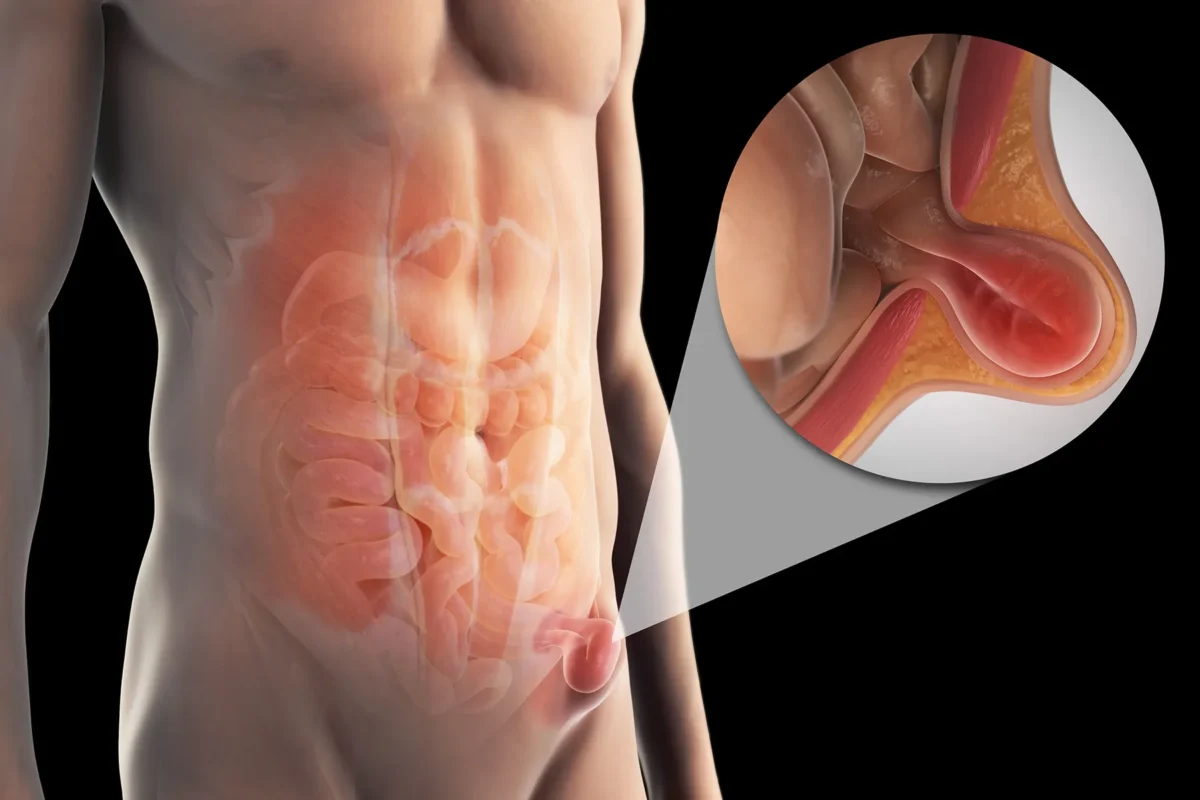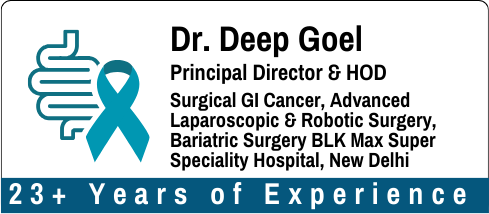Hernia Symptoms You Shouldn’t Ignore: A Guide to Early Detection and Care

A hernia often begins with a minor sign, perhaps a soft bulge in the abdomen or a gentle pulling sensation when you bend or lift something heavy. At first, it might seem harmless and easy to dismiss. But even mild hernia symptoms can worsen over time, potentially leading to serious complications like severe pain, bowel obstruction, or tissue strangulation if left untreated.
Hernias are more common than many people realise and can affect anyone, regardless of age or lifestyle. Most hernias can be treated effectively, especially when detected early.
In this blog, we’ll explore the early signs of hernia, common hernia pain locations, when to see a doctor for hernia concerns, and the warning signs that suggest a hernia may require surgery.
What Is a Hernia?
A hernia happens when an internal organ or tissue pushes through a weak area in the muscles or tissues that usually hold it in place. This often occurs in the belly area and can appear in different forms, like in the groin (inguinal), near the belly button (umbilical), around a surgical scar (incisional), or in the upper stomach.
While a hernia may not cause serious problems right away, it won’t go away on its own and can get worse if not treated. That’s why noticing the signs early is so important.
Early Signs of Hernia
Spotting a hernia early can help avoid serious issues and make treatment easier. While symptoms can differ based on the type of hernia, there are a few common early warning signs to look out for:
- Noticeable lump: Often becomes more visible when you cough, stand, or apply pressure.
- Sense of heaviness: A feeling of weight or tightness in the abdominal or groin region.
- Pain during lifting: Discomfort that arises while doing physical tasks or heavy lifting.
- Persistent dull pain: A low, nagging ache that tends to worsen as the day progresses.
These symptoms may be subtle at first, which is why they are often ignored.
Hernia Pain Location: Where Does It Hurt?
The area where you feel hernia pain usually depends on the type of hernia you’re dealing with. For example:
- Inguinal hernias usually cause a sharp or aching pain in the groin area or scrotum.
- Umbilical hernias create discomfort around the belly button, especially when straining.
- Hiatal hernias may not cause a visible lump, but they often produce symptoms similar to heartburn or pressure in the upper stomach or chest.
- Incisional hernias typically cause pain near a previous surgical scar.
Paying attention to where the discomfort originates can help identify the type of hernia and determine the best course of action.
A patient of Dr. Deep Goel shared, “I had been dealing with an inguinal hernia for over a year. It caused discomfort during daily tasks, especially while bending or lifting. Dr. Deep Goel carefully explained my treatment options and recommended a minimally invasive surgery. The procedure went smoothly, and to my surprise, I was able to walk pain-free the very next day.”
When to See a Doctor for Hernia?
A hernia isn’t always an emergency, but you should know when to see a doctor for hernia symptoms:
- If you notice a persistent or growing bulge.
- If you experience ongoing discomfort or pain.
- If you feel pressure, nausea, or difficulty passing stool or gas.
- If you’re unable to push the hernia back in manually (reducibility).
Delaying medical attention can increase the risk of complications like strangulation, where blood supply to the herniated tissue is cut off.
Dr. Deep Goel emphasises, “A hernia may seem harmless in its early stages, but if left untreated, it can lead to serious complications. The earlier it’s addressed, the better the outcome.”
Signs Hernia Needs Surgery
Not every hernia requires immediate surgery, but there are clear signs hernia needs surgery:
- Severe pain and tenderness in the hernia area.
- Redness or discolouration over the bulge.
- Fever, vomiting, or rapid heart rate, which could indicate a strangulated hernia.
- Bulge that won’t go back in (non-reducible).
- Digestive symptoms, such as severe bloating or constipation.
Surgical repair is the only way to permanently fix a hernia, especially if it becomes painful or affects your quality of life.
What Causes a Hernia?
- Heavy lifting
- Persistent coughing or sneezing
- Obesity
- Pregnancy
- Chronic constipation or straining
- Previous surgery
These factors put extra pressure inside the abdomen, which can cause weak spots in the muscles or tissues to tear or bulge outward, leading to a hernia.
Diagnosis and Treatment Options
Hernias can be diagnosed through a simple physical examination, especially if a visible lump is present. For internal or less obvious cases, imaging tests such as an ultrasound, CT scan, or endoscopy are used to get a clearer view and determine the best course of treatment.
Treatment options include:
- Observation: Small hernias without symptoms may need regular monitoring.
- Laparoscopic or open repair: Closing of the hernia opening, strengthening the muscle wall to stop it from worsening or coming back.
- Mesh repair: To reduce the risk of recurrence.
Another patient shared, “After my second pregnancy, I began experiencing pain and swelling near my belly button, which was later diagnosed as an umbilical hernia. Dr. Deep Goel suggested a laparoscopic repair, which would result in less pain and a faster recovery. Within a short time, I was back on my feet and able to care for my children again without discomfort.”
Dr. Deep Goel adds, “With modern techniques like laparoscopic surgery, hernia repairs are quicker, safer, and have faster recovery times. We tailor each treatment to the patient’s lifestyle and needs.”
Living With a Hernia
If you’re living with a hernia, here are some tips to manage symptoms until treatment:
- Avoid heavy lifting
- Maintain a healthy weight
- Eat high-fibre foods to prevent straining
- Use proper posture while standing and sitting
- Wear supportive garments if advised by your doctor
These habits can’t reverse a hernia, but they may help manage symptoms and slow its worsening over time.
Final Thoughts
Hernias may start small, but their impact on your life can be significant if ignored. Being aware of hernia symptoms, recognising the early signs of a hernia, and understanding when to seek medical attention for hernia care can help prevent serious complications.
Knowing the hernia pain location can also help you communicate symptoms better. And if you notice signs hernia needs surgery, don’t delay seeking expert medical help.
Early action can lead to a smoother recovery and better outcomes. If you suspect a hernia, consult a specialist to explore your options and ensure you stay on top of your health.
FAQs
1. Is wearing a hernia belt safe?
A hernia belt may provide temporary support, but it is not a substitute for surgery.
2. Can hernias be hereditary?
Yes, a family history of hernias can increase your risk of developing a hernia.
3. Can I do yoga or stretching with a hernia?
Gentle movements may be fine, but avoid deep bends or pressure on the abdomen.
4. How long is the recovery after hernia surgery?
Most patients recover in 1–2 weeks for light activity and 4–6 weeks for full recovery.
5. Will I have a scar after hernia surgery?
Minimally invasive (laparoscopic) surgery results in small scars; open surgery may leave a larger one.
Explore more blogs: What Are Rectal Cancer Surgery Options?

